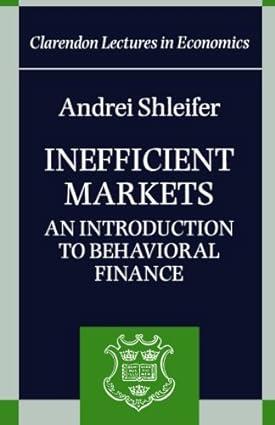Question
PART A: Suppose that you are given 2 scenarios: Scenario #1 Given that you already have $1000, you have the following 2 choices: (a) You
PART A: Suppose that you are given 2 scenarios: Scenario #1 Given that you already have $1000, you have the following 2 choices:
(a) You can receive another $500 for sure. (b) You can flip a fair coin. If the coin flip comes up heads, you get another $1,000. But
if it comes up tails, you get nothing.
Scenario #2 Given that you already have $2,000. You have the following 2 choices:
(c) You can lose $500 for sure. (d) You can flip a fair coin. If the coin flip comes up heads, you lose $1,000. But if it
comes up tails, you lose nothing.
In an experiment, researchers have found that 85% of the people participated in scenario #1 select option (a) whereas 70% of the people asked in scenario #2 select option (d) even though the average amount of money that you can expect to get, regardless of the options is $1,500 (and effectively, both scenarios are IDENTICAL in terms of the outcome). Answer the following:
-
(i) What type of behavioral bias does this example represent?
-
(ii) In your own words, explain what this behavioral bias means in plain English such that
an educated college student (not necessarily in business or Finance) can understand and follow your line of thoughts.
PART B: Your friend Karma Wilson is a typical college student. She works part time while going to school full time pursuing a degree in Finance. Karma makes decent money as a waitress at Butchers Union and responsibly saves some of her earnings for rainy day fund. However, when it comes to tax refund time, Karma typically uses her tax refund for trips to Four Winds casino or to splurge on a tech gizmo. Answer the following:
-
(i) What type of behavioral bias does this example represent?
-
(ii) In your own words, explain what this behavioral bias means in plain English such that
an educated college student (not necessarily in business or Finance) can understand and follow your line of thoughts.
Step by Step Solution
There are 3 Steps involved in it
Step: 1

Get Instant Access to Expert-Tailored Solutions
See step-by-step solutions with expert insights and AI powered tools for academic success
Step: 2

Step: 3

Ace Your Homework with AI
Get the answers you need in no time with our AI-driven, step-by-step assistance
Get Started


